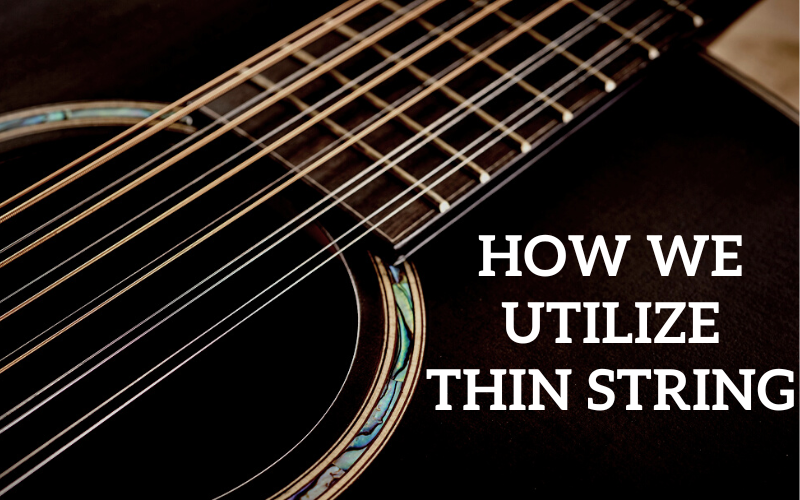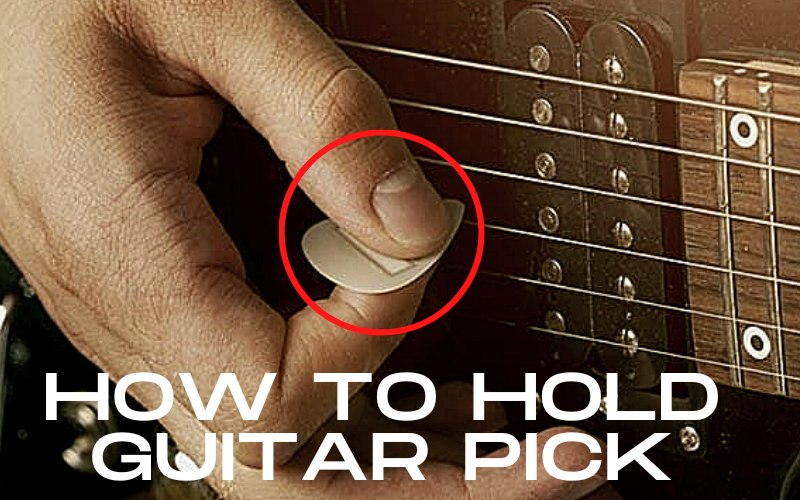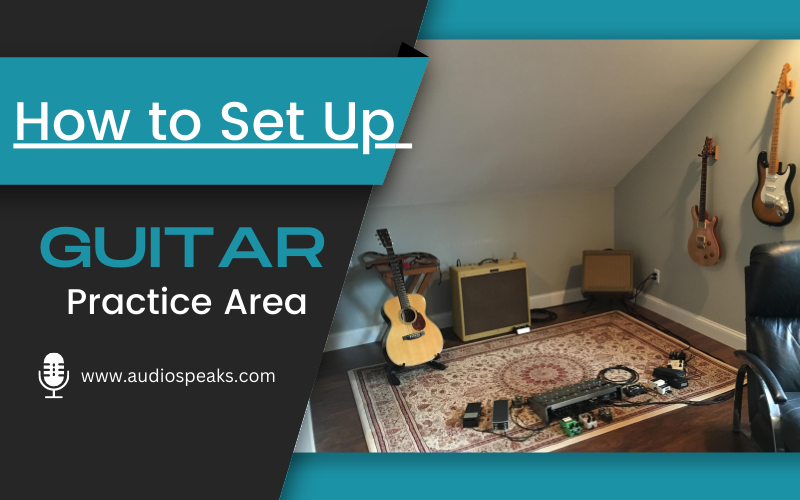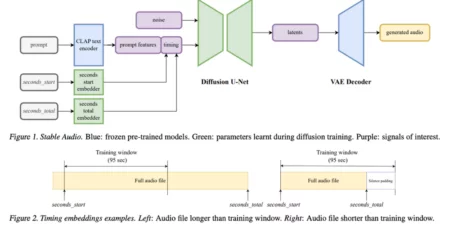Almost everyone has experienced the impulse to break out into an air guitar solo while listening to fantastic music at some point or another. A real acoustic or electric guitar requires practice and devotion. However, almost anyone can play an air guitar.
Guitar tips for beginners will assist you in developing a learning pattern and offer practical, logical suggestions for organizing your practice sessions. Finding a quiet place to read this page after printing it is advised. It’s a quick read, so don’t stress.
Whatever stage you are at in your guitar learning, the guitar tips for beginners below should help you get in the appropriate frame of mind and give the structure of your lesson, which you can then use to learn any aspect of the instrument.
12 Guitar Playing Tips for Beginners
Learning the guitar size of your hands does not matter, so guitar tips for small hands are not different from normal hands. You can also consider these beginner tips as guitar tips for intermediate players. Here are 12 guitar tips and tricks for new guitar players to help you improve your technique.
1) Choose The Right Guitar for You
It might seem like a no-brainer where to start; you might only be utilizing one for your lessons and not own one when you’re just starting to play the guitar. Choosing the right guitar is top guitar advice to help you learn faster.

Investing in a guitar you can practice frequently will significantly speed up your development and help you understand the methods in-depth. The only requirement for your first guitar is that it be one you can routinely pick up and practice on; it does not need to be the best or most expensive.
However, if the guitar is going to be awful to play, don’t just get the cheapest one you can find. It’s less likely that you’ll persist with something if learning it is difficult and frustrating.
Latest Post: How Many Strings Does a Guitar Have?
2) Start Slowly
Most beginners will attempt to play chords as quickly as they can. Resist the urge to follow these tips to learn guitar slowly. Instead, gradually study each chord one at a time. Try switching between chord forms more quickly once you’ve slowly mastered a few. You can avoid developing undesirable habits by doing this instead of trying to sprint before you can walk.
3) Avoid Staring at Your Hands Excessively
For beginning players, resisting the impulse to check out your hands while playing is virtually impossible. The man is attempting to play chords while oblivious to the fretboard. Paying attention to your hands when shifting chords is vital but try not to do so too much.
You’ll be able to connect to the visual and tactile aspects of a proper chord placement if you look away from your hands. Try practicing looking away or closing your eyes while playing and sometimes checking your hands to ensure you’re in the appropriate location to develop this further.
4) Practice Challenging/Difficult Chords
You risk becoming stuck if you only use the chords, you already know how to play. Instead of playing it safe with simple chords, always challenge yourself with new ones and take the time to learn them.
Read Also: How To Read Guitar Sheet Music Chords?
5) Utilize Thin String

Try a thinner gauge string than the norm as a beginner to practice without getting sore fingers. Acoustic guitar tips for beginners are to try .011 gauge strings for acoustic guitars and .009 gauge strings for electric guitars. Since thinner strings don’t require as much hand power to hold the chords, you won’t need as many thick calluses on your fingertips to keep your fingertips from getting painful.
6) Correct Your Mistakes
It is typical to be able to play some of a song while having trouble with other parts when learning it. Instead of concentrating on their flaws or blunders, most students prefer to start the song over again.
Making your weakest practice area your primary focus is the best thing you can do to improve your guitar technique. To ensure you get it perfectly, go slowly through it, note by note. Keep in mind that speed will catch on eventually! You won’t learn the tunes of songs by playing them repeatedly.
7) Record Your Playing
It is highly significant. The necessity of recording your playing is not emphasized sufficiently in most how-to manuals and tutorials. Making a recording will enable you to analyze your finger placement between notes and chords and see your mistakes.
Additionally, it lets you see your pace and beat to contrast it with the tune you are playing quickly. Listening to your tape will inspire you to keep studying since you’ll be able to hear how far you’ve come as a player and be inspired to keep learning. Additionally, you can always show it to your friends or mentors passionate about the guitar to gain their scathing criticism.
Latest Article: How To Clean Guitar Strings at Home?
8) Learn To Use a Guitar Pick
Learning to play rhythm guitar is a good idea, even if you want to be a lead guitarist. It will aid in timing improvement. You must learn how to use a pick if you plan to play rhythm guitar.

Picks for guitars are surprisingly affordable, and you can create your own. They are available in various thicknesses. You should start by using a choice with a light gauge. To ensure that you can grasp the pick easily while playing, make sure it is thin and forgiving. You must learn how to wield a guitar pick properly to avoid having it rotate, slide, or fall in your hands.
9) Pick Appropriate Songs to Learn
The songs you love that will help you win easily as a novice are the correct ones. Despite the few obstacles, the music you adore will make learning the guitar pleasurable. Just make sure the songs are appropriate for your skill level. You don’t want to pick music that will make you unhappy.
You can browse guitar tunes online to choose the best music for your skill level. They may bore you, but they would be an excellent method to improve your skill.
10) Set Up the Practice Area
These electric guitar tips for beginners: Designated practice space is crucial for a novice since it encourages you to sit and lie down. Creating habits is much simpler if you have a place for training.
It need not be a big or full space; it might be simply a corner of your living room or bedroom. The fundamental cause of why most guitar students make modest progress is a lack of regular and consistent practice.
You’ll always feel inspired to pick up your guitar once you have everything you need to play it and have established a special space for frequent practice. Additionally, playing in a room full of people who aren’t interested in your practice can be distracting. Playing in a room full of toddlers would require frequent breaks to observe what they are doing.

Additionally, you want to set up your practice area so you can play in various postures. Both standing and sitting should allow you to play. It is crucial if you want to pursue your guitar playing professionally because there may be instances when you must stand on stage.
You’ll notice that while you are playing while seated, you tend to sort of bend over in an unhealthful attempt to see what you are doing. You’ll have an extremely difficult time seeing your left hand when you’re standing. You can overcome these difficulties by regularly practicing in a clean environment.
Read Also: What Causes Fret Buzz and How to Fix it?
11) Systematic Practice
It’s not a terrible thing to have a skilled guitar teacher because they may provide insightful criticism and assist you in correcting your errors. A professional instructor will also demonstrate advanced chords, strumming techniques, and scales.
You can do it at home if you can’t afford a teacher. Since Jimmy Hendrix and other well-known guitarists are self-taught, this is not surprising. If you decide to study the guitar at home, you must practice consistently to pick it up quickly and prevent creating negative habits.
12) Avoid Comparing Yourself to Others
The older guitar sounds great than the new guitar so you can follow them as guitar tips for older. Don’t compare yourself to the talented guitar players you hear in as much music as you can avoid doing so. Remember that education is a process.
So, if you attend a concert and a musician performs so simply and significantly better than you, resist the feelings of helplessness and the want to give up. Instead, embrace the drive to improve so you can be as good.
When you first start playing, comparing yourself to yourself is the finest thing you can do. If you want to see your improvement and blunders, record your playing, and then compare each session. When you follow these tips, you must move to guitar tips for advanced players to play harder.
Learning to play the guitar is challenging but gets easier with practice. The easier playing guitar will feel as you put in more training. It is the reason why most guitarists who give up do so right away. Initial guitar instruction is challenging.
Electric guitars are typically the easiest to play because they have thinner strings and reduced activity, which makes it simpler to press the strings down. Additionally, the necks are often narrower, which is advantageous initially.
You can certainly play the guitar with thick fingers. You can play the guitar with your fingers; some individuals can play with their feet.





